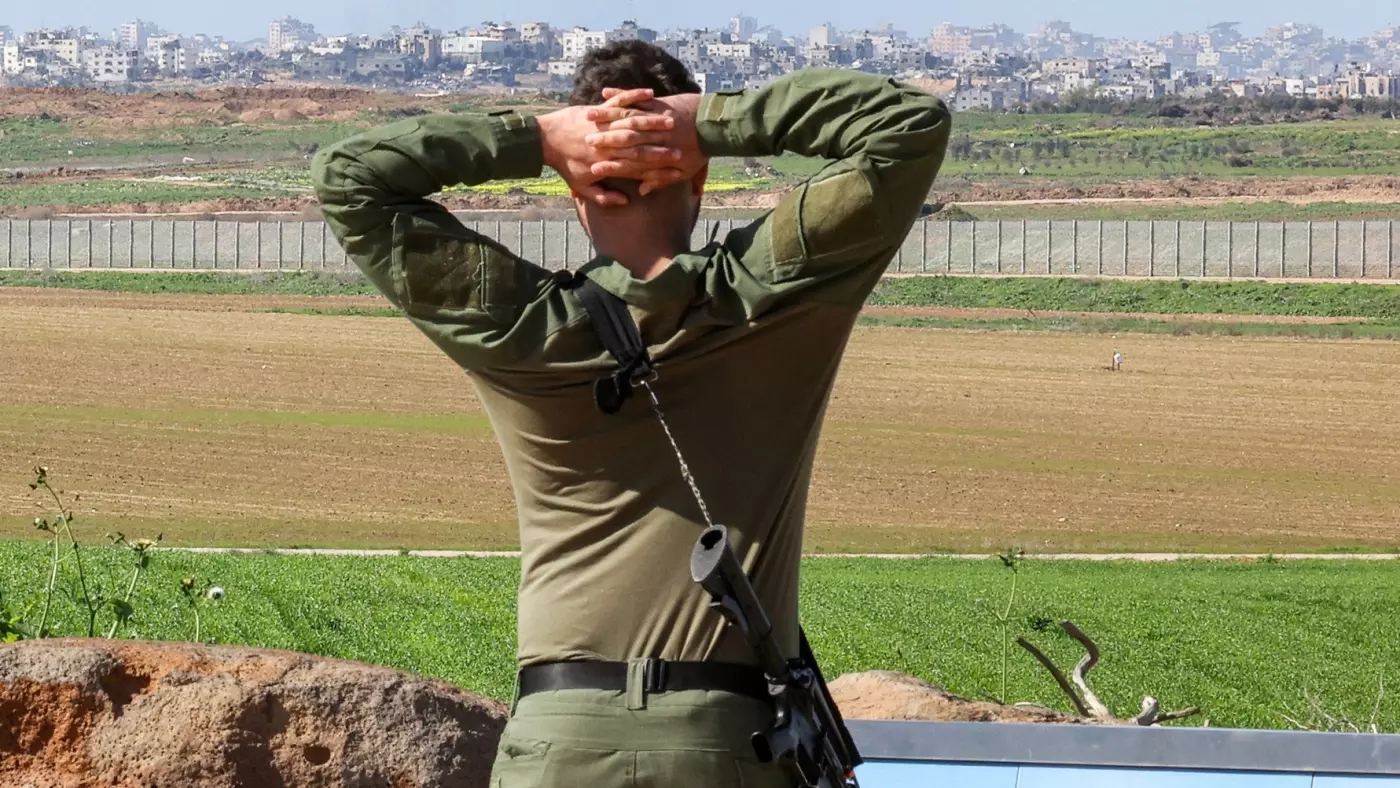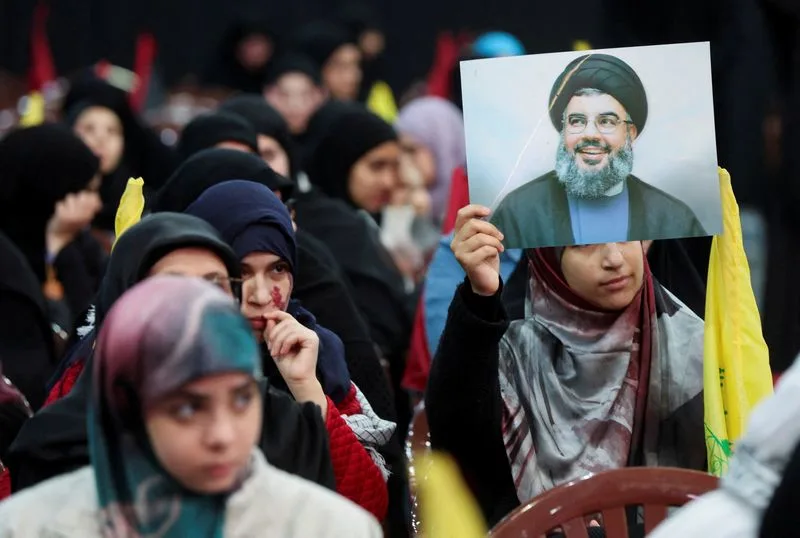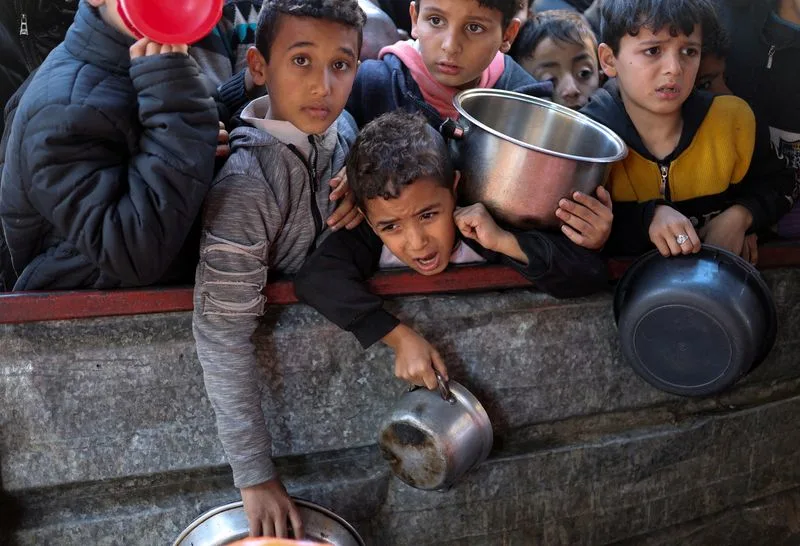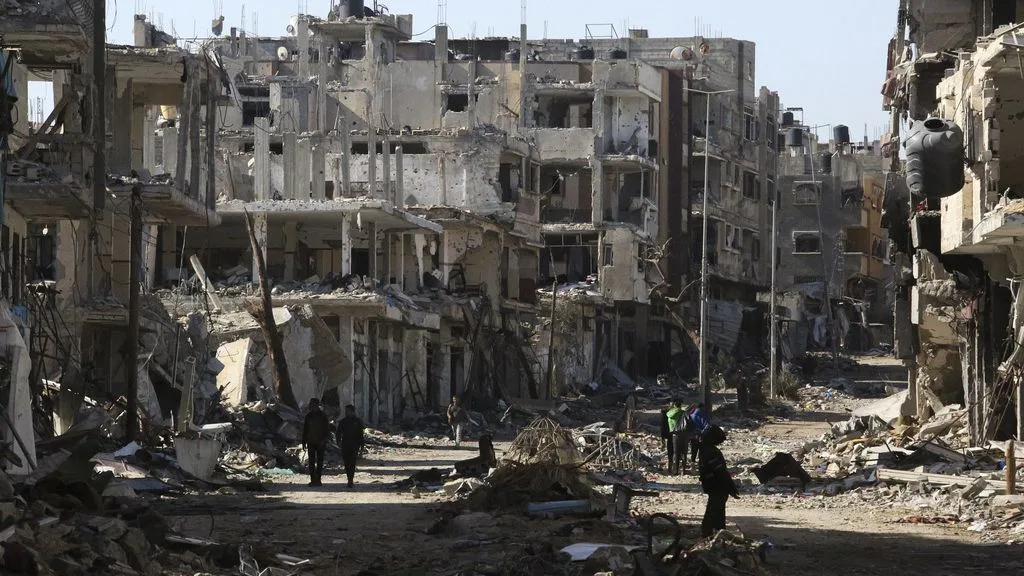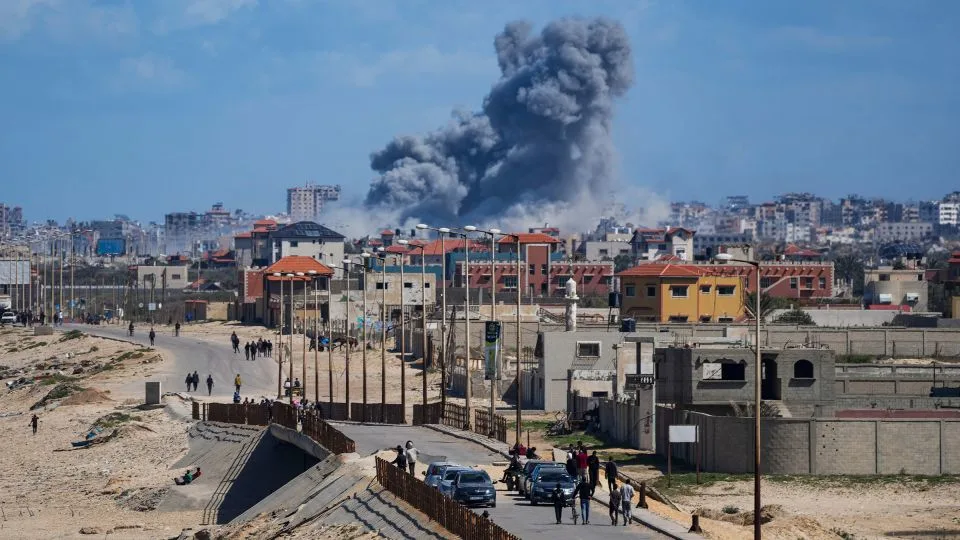FPFOREIGN POLICY — As of the middle of February, the Gaza Health Ministry had reported more than 28,000 Palestinians dead in the war precipitated by the murder, rape, and kidnapping conducted during Hamas’s raid on Israeli border settlements and towns on October 7, 2023. Press accounts estimate that in the northern Gaza Strip, almost 80 percent of buildings may be damaged or destroyed. To avoid being caught up in the most intense fighting, according to the United Nations, as many as 85% of the 2.2 million people in Gaza may have left their homes as of mid-December. The scale of death and destruction arising from Israel’s legitimate counterattack has precipitated charges of war crimes and genocide against Israel in the International Court of Justice.
The Israeli government has claimed that it is adhering to its well-developed system for assessing combat in light of the laws of war. But if that is the case, then why has the Israeli offensive produced so much damage and death?
One answer is simple. When war is fought among civilians, civilians are killed. Among the most poignant examples is from World War II: the number of French citizens killed by Allied bombing in the months prior to the June 1944 Normandy invasion. The Allies bombed lines of communication heavily to prevent the Germans from reinforcing their coastal defenses along the English Channel. Historians suggest that some 20,000 French civilians who had the misfortune of living near ports, bridges, roads, or railroad infrastructure were killed in these attacks and during the subsequent two months of ground and air operations.
Some would say that this is ancient history; we would never do that again. But more recent history suggests that, though modern weapons are considerably more accurate and procedures in Western militaries to avoid collateral damage are more formalized, fighting among civilians, especially in urban areas, always means hell on earth for the civilians who may be trapped there.
In 2016 and 2017, a US-led counterterrorism coalition and its Iraqi and Syrian (mainly Kurdish) allies aimed to destroy the Islamic State terror group and eject it from the larger cities that it held in Iraq and Syria — first Mosul, and then Raqqa. These battles were immensely destructive, despite coalition efforts to mitigate civilian harm and the United States’ possession of a lavish supply of the most accurate weapons ever produced.
Like the US and its allies in Iraq and Syria, Israel chose as its objective the destruction of its adversary. That’s why those earlier wars provide important insights into what Israel knew it would face in Gaza, and they help to explain its military strategy, tactics for the campaign, and the level of death and destruction that we have witnessed.
The campaign to destroy Islamic State in Mosul lasted from October 2016 to July 2017. Nearly 94,000 Iraqi troops attacked an estimated 3,000 to 5,000 Islamic State fighters. As many as 29,000 aerial munitions may have been employed by the United States and its partners during the fight, plus uncounted artillery shells fired mainly by Iraqi security forces. Of a pre-battle population of roughly a million people, an estimated 9,000 to 11,000 civilians died, at least a third of them from coalition fire, a third due to Islamic State actions, and a third from causes that are impossible to attribute. Roughly 9,900 structures were damaged or destroyed, including some 65 percent of residential construction.
The Raqqa campaign, which lasted from June to October 2017, is particularly instructive because it was conducted almost entirely under US control. Between 30,000 and 40,000 Syrian and Kurdish militia members fought between 2,900 and 5,600 Islamic State fighters. The militias that did the ground fighting had all been organized and armed by the United States. Most of the air and artillery support was provided by Washington, with some assistance from allies, and the United States attempted to hew closely to the laws of armed conflict.
To somewhat reduce the destructiveness of the campaign, the largest bombs employed were in the 500-pound category. US Air Force figures suggest that as many as 15,000 aerial munitions were employed against targets in Raqqa during those five months, with US Marine Corps artillery adding 35,000 155 mm artillery shells (perhaps 1,750 tons of shells) to the mix.
Raqqa was also bombed and shelled heavily prior to the 2017 offensive. But after the campaign was complete, the bodies of roughly 4,100 civilians were found under the rubble, along with those of some 1,900 individuals wearing “military gear.” Nongovernmental organizations estimate that somewhere between 774 and 1,600 of the civilian casualties were caused by coalition fire. And approximately 11,000 building structures were damaged or destroyed, rendering 60% to 80% of the city uninhabitable.
In Raqqa and Mosul, most civilians seem to have perished due to building collapses caused by bombs and shells, but in Mosul, the ratio of damaged buildings to civilian deaths was about 1-to-1, whereas in Raqqa, it was about 3-to-1.
Though they are cautious in their conclusion, analysts at the Rand Corp. — a US-funded think tank — attribute the lower rate of civilian casualties per building in Raqqa relative to Mosul mainly to one simple factor — a very high percentage of Raqqa’s pre-battle civilian population of roughly 300,000 people left the city, some prior to the battle and some during it.
Hamas presented Israel with a very difficult military problem, even more difficult than Mosul or Raqqa. The degree of difficulty explains a lot about the terrible trajectory of the Israel-Hamas war. (Reasonable questions have also been raised about the impact of how IDF military lawyers interpret provisions about civilians in the standard international treaties on the conduct of warfare — while there is not much evidence that the IDF deliberately targets civilians, some of the destructiveness may be explained by an overly broad interpretation of proportionality and precaution measures.)
Whatever else one can say about Hamas, it is a capable and ruthless adversary. The IDF faced four main problems in starting its operation — the size and quality of the Hamas military force; the urban environment; Hamas’s comprehensive preparation of the terrain, especially including hundreds of miles of tunnels and deeply buried bunkers; and Hamas’s systematic integration of its troops and prepared defenses with the civilian population.
The size and quality of the Hamas military force creates a major problem in its own right. Observers estimate that at the outset of the fighting, Hamas had between 15,000 and 40,000 soldiers, with its actual combat power reportedly concentrated in five brigades. At minimum, this is three times the combat power that Islamic State had in either Mosul or Raqqa — on the higher end of the estimate, more than 10 times Islamic State’s combat power. This alone would produce a significantly more difficult and destructive offensive campaign. (As another point of comparison, it is estimated that 8,000 Ukrainian troops, in perhaps four small brigades, defended Mariupol from a much larger and better-equipped Russian force for three months in early 2022.)
Hamas troops also appear to be well trained, and they benefited from advice by more experienced military experts, both from Hezbollah in Lebanon and from Iran. Hamas’s forces, so far as can be known, are well equipped with light and heavy infantry weapons — such as assault rifles, sniper rifles, machine guns, shoulder-fired anti-tank rocket launchers, mortars, and anti-tank guided missiles. Hamas has manufactured and imported hundreds of artillery-type rockets, most of them unguided, and some with ranges as long as 150 kilometers (93 miles). Hamas also avails itself of commercially available off-the-shelf surveillance technology, including drones and digital cameras.
If the well-equipped, armored forces of the IDF met these Hamas troops on a flat plain, they probably would make short work of them. But a well-trained and well-armed infantry force becomes formidable in an urban environment.
The urban environment favors the tactical defense because it provides the defender with concealment, cover, and canalization. The US military concluded as much following its experiences combating Islamic State; one report released in September 2017 states that “[e]xperiences in Mosul reaffirmed that urban terrain strengthens the defense.”
Buildings provide multiple hiding places. Basements offer not only hiding spots, but also natural bunkers, which can be used to shelter from enemy weapons and protect one’s own fighters so they can shoot effectively. Where there are tall buildings, upper floors provide firing positions and unobstructed fields of fire for long shots down city streets, and they also enable observation of enemy movements. Streets and roads channel the movement of adversary forces; they are natural positions for an ambush.
These attributes can easily be improved by defenders. Holes are knocked in walls within buildings to permit movement from room to room and building to building, obscured from view. Tunnels and trenches are also dug from building to building. Basements and upper floors can be reinforced with sandbags to protect against bullets and shrapnel, as well as with vertical steel and wooden beams to prevent ceiling collapse. Bunkers and firing positions are often built in the interior of buildings, with weapons sighted through holes cut in several layers of interior and exterior walls to confuse the targets about the source of fire. Entrances and stairways are mined and booby-trapped against infantry assault.
Because of the urban environment and the ease with which it can be improved, the defender usually has another line of defensible positions to which it can retreat under pressure, starting the whole process of attack and defense over again.
There was no shortage of materials available to Hamas to improve its defenses despite an ongoing Israeli blockade. United Nations statistics show that significant quantities of construction material were imported into Gaza in the past nine years— 50,000 truckloads permitted in 2022 alone, making up 50% of supplies arriving in the enclave, whereas only 25% of deliveries contained food and 4% contained humanitarian supplies provided by international organizations. Given the group’s administrative control over Gaza, it would be surprising if the construction efforts thus supplied were not influenced by Hamas, and that materials were not skimmed from civilian projects to support underground construction of bunkers and tunnels.
The effect of an urban environment on offensive operations is almost always an increase in the attacker’s reliance on firepower. In Raqqa, the United States and its partners relied heavily on precision-guided weapons, bombs, missiles, rockets, and artillery. They paid careful attention to the rules of war and often employed the smallest practical weapon to the target. (There seems to have been a hidden cost to this practice, because in Raqqa, three weapons were dispatched against each target on average, presumably to ensure that it was destroyed. Thus, the use of less destructive munitions seems to ensure that more munitions are fired to achieve the desired effect.)
In these battles, the nature of the urban environment — coupled with an experienced, committed, and well-armed adversary — were enough to require the coalition to conduct a locust-like offensive in which these munitions, fired in support of advancing ground forces, gradually consumed Raqqa, just as they did Mosul.
It should not be a surprise, therefore, that the IDF now finds itself destroying a great many structures in Gaza.
Hamas further improved the urban environment with a vast subterranean construction project — a deeply buried tunnel network that seems to serve both tactical and strategic purposes. Some tunnels link together fighting positions to support tactical maneuvers, surprise counterattacks and ambushes, and resupply efforts. Others permit leaders to move from their residences to their offices. Some lead to bunkers, which allow command and combat groups to work and rest underground. Presumably, other bunkers contain reserves of ammunition, including long-range rockets. And little has been said about where Hamas builds its weapons, but it seems likely that there are small fabrication facilities underground.
As there are hundreds of miles of tunnels according to most sources, and the Israelis only show snippets of what they find, it could be that much of the network is pretty basic. But most of the videos and photographs that have emerged show what appear to be narrow but well-constructed, usually steel-and concrete-reinforced single file passages, while some tunnels are much wider. Living quarters and possible prisons have also been discovered. The tunnels have numerous camouflaged, vertical shafts for entrance and egress. It also appears that electric cables are strung along the ceilings, which provides power, but presumably also landline communication, allowing Hamas leaders to evade detection by Israeli intelligence.
The inherent defensive possibilities of the urban environment, combined with a significant subterranean component constructed over many years, produced a vast fortress system. Though they certainly dug tunnels, a complex subterranean network like that built by Hamas fighters was unavailable to the Islamic State defenders of Mosul and Raqqa, creating vast new problems for the IDF beyond those experienced by the US-led counterterrorism coalition.
To try to take buildings and more importantly take the tunnel system solely through a series of tactical ground force engagements would not only take a great deal of time, but it would also immeasurably add to the ground force casualties Israel would have been likely to suffer. No military would embrace this prospect. Moreover, even a direct attack would be very destructive insofar as it would ultimately require the demolition of the tunnels from the inside out using large quantities of high explosives.
Israeli soldiers operate at the entrance to a tunnel in Khan Younis in the southern Gaza Strip in an undated photo released by the military on January 30, 2024. (Israel Defense Forces)
We cannot know exactly how the IDF chooses which portions of Hamas’s tunnel system to attack from the air, but any sustained attack would depend on bombs of great penetration capability and explosive power. (Western media has been critical of the IDF’s use of one-ton bombs; CNN has analyzed more than 500 large craters in Gaza and found them consistent with those produced by underground explosions.) Because Hamas routes these tunnels under and into buildings throughout Gaza, Israeli attacks inevitably also produce damage on the surface. Though tunnels and underground bunkers are not the only target for the Israeli Air Force, their importance and ubiquity likely induce many of its strikes.
The US military, for example, encountered a large tunnel system near Saigon, called the “tunnels of Cu Chi,” during the Vietnam War. After years of indecisive attacks by ground forces, artillery, and tactical aircraft, Washington loosed B-52 strategic bombers on the tunnel network in 1969 and finally destroyed most of it.
Observers can understand Israeli choices without endorsing them, or more importantly, supporting them. But they should understand the reasons for their opposition. Individuals can oppose Israel’s war on the basis of their own morality, but the United States as a nation, given its own military history, including recent history, does not have much ethical ground to stand on in decrying Israeli strategy.
Neither, for that matter, do Arab governments. Israel is not doing anything that the United States and its Arab allies have not done — and done recently. Some may claim that Washington has had an epiphany and would never do this again, but such a claim is not credible. When the United States is provoked, it is historically quite ferocious. So-called collateral damage results.
Hamas, for its part, appears unconcerned about putting Palestinian civilians in harm’s way. Indeed, this is a feature, not a bug, of their political and military strategy. Some use the term “human shield” for this strategy, but that is incomplete. This element of Hamas’s strategy could also be described as “human camouflage,” and more ruthlessly as “human ammunition.”
On a daily basis, the activities of civil society obscure Hamas’s activities. More importantly, Hamas understands that civilian casualties are an Achilles’ heel for Western military operations. Liberal democracies put a high value on the individual, and hence on every human life. Lawyers have developed an elaborate legal structure to regulate the conduct of warfare because of this respect for the individual, which is enshrined in international treaties.
Western militaries, including the IDF, try to live by these laws, though the law of armed conflict does not proscribe them from waging war. They try to follow these rules in part because they reflect the values of the societies that they serve and in part because of an expectation of reciprocity, but also because pragmatically, they know that lots of civilian casualties can become a political liability at home and abroad. Hamas spends the lives of Palestinian civilians as ammunition in an information war. They are not the first to do so, and they probably will not be the last.
The course of every urban campaign will be influenced by unique factors, but at the same time, they share similarities. When a capable defender, even in small numbers, has time to prepare a defense in an urban environment, the attacker will meet serious difficulties. The attacking force will always be interested in doing as well as it can at the least cost to itself, especially in terms of its own casualties. This means that it will bring not only all of its cunning to bear on the problem, but also that it will, as has generally been the case in modern times whenever the defense proves strong, bring lots of firepower to the fight.
Urban offensives will therefore generally do very serious damage to buildings and infrastructure. If civilians are constrained to remain in these areas of intense combat, for whatever reason, they will suffer immensely, as have the civilians of Gaza.
Cities have grown in size and density as the population of the planet has grown and as more and more people move to cities to be a part of the modern economy. The Israeli offensive in Gaza, the US-led coalition offensives in Mosul and Raqqa, and even the bloody and clumsy Russian siege of Mariupol may not be anomalies.
Instead, they are a window into future war. Rather than imagining pristine military operations, analysts and strategists should better understand the implications of failed diplomacy, or of conflicts simply left unsettled because diplomatic engagement is politically inexpedient.
Few political disputes will be settled by invitational armored battles in empty plains and deserts. War is an extension of politics, and politics happen among people.

